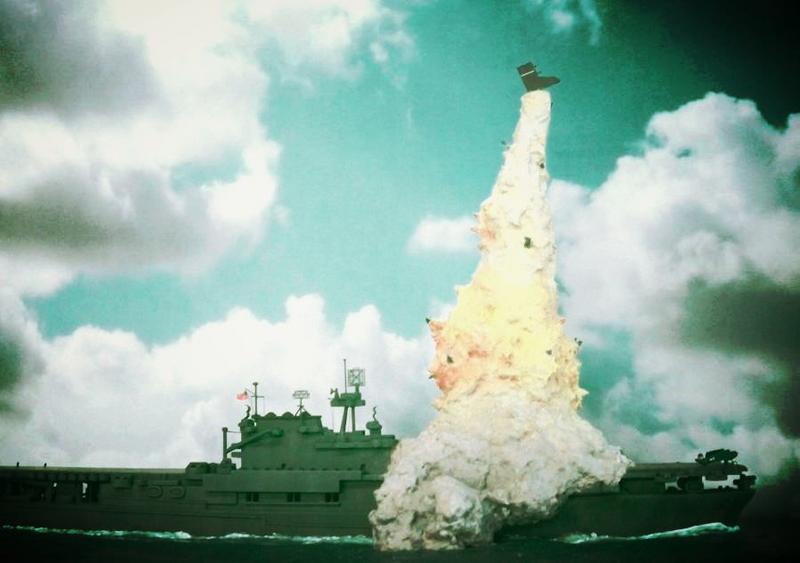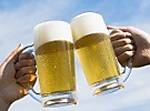Hosted by Jim Starkweather
Kamikaze Dive ...
pbennett

Joined: October 14, 2007
KitMaker: 464 posts
AeroScale: 15 posts
Posted: Monday, September 23, 2019 - 10:36 PM UTC
I want to model a Japanese Kamikaze aircraft to show it banking to the left and entering into a dive. My question relates to the various moving surfaces on the aircraft. In such a situation, would the following be the correct combination: left aileron up, right aileron down, rear elevators down, rudder to the left? Presumably the adjustment of these surfaces would be fairly slight.
Posted: Monday, September 23, 2019 - 11:41 PM UTC
Paul,
If memory serves, the rudder is generally opposite the turn (i.e. left-hand turn means right-hand rudder), but it would depend also on exact maneuver the pilot is trying to execute. In this case, if he's trying to get the nose around quickly without concern for maintaining altitude then he might very well put in left rudder.
The deflection of the ailerons will also depend on where he is in the maneuver. Once he has the bank angle he wants, he would center the stick (side-to-side) to maintain that angle. If he is trying to increase the bank angle (roll) to the left then the deflection of the ailerons would be as you say.
As the pilot transitions from level flight to a dive, then the elevators would be deflected down, but once he achieves the desired dive angle he would again center the stick (fore-and-aft) to zero-out the deflection of the ailerons.
It's been decades since I had control of an aircraft so perhaps someone more current can correct me/explain it better.

If memory serves, the rudder is generally opposite the turn (i.e. left-hand turn means right-hand rudder), but it would depend also on exact maneuver the pilot is trying to execute. In this case, if he's trying to get the nose around quickly without concern for maintaining altitude then he might very well put in left rudder.
The deflection of the ailerons will also depend on where he is in the maneuver. Once he has the bank angle he wants, he would center the stick (side-to-side) to maintain that angle. If he is trying to increase the bank angle (roll) to the left then the deflection of the ailerons would be as you say.
As the pilot transitions from level flight to a dive, then the elevators would be deflected down, but once he achieves the desired dive angle he would again center the stick (fore-and-aft) to zero-out the deflection of the ailerons.
It's been decades since I had control of an aircraft so perhaps someone more current can correct me/explain it better.

TimReynaga

Joined: May 03, 2006
KitMaker: 2,500 posts
AeroScale: 318 posts

Posted: Tuesday, September 24, 2019 - 12:42 AM UTC
Paul,
Your ideas about the control surfaces sound about right; the situation would have been so dynamic that you could even get away with some fairly extreme control inputs evident. In fact, that might be better to get the dramatic message across more powerfully.
By the way, I've modeled a similar scene, but from the 1/1200 scale sailor's perspective:

A pretty awful situation!
Your ideas about the control surfaces sound about right; the situation would have been so dynamic that you could even get away with some fairly extreme control inputs evident. In fact, that might be better to get the dramatic message across more powerfully.
By the way, I've modeled a similar scene, but from the 1/1200 scale sailor's perspective:

A pretty awful situation!
pbennett

Joined: October 14, 2007
KitMaker: 464 posts
AeroScale: 15 posts
Posted: Tuesday, September 24, 2019 - 02:39 AM UTC
Tim,
Hello again ... I've just answered your response to my question on USS New Jersey. To clarify, I am planning to use a 'forced perspective' technique for my scene ... a 1/144-scale kamikaze aircraft banking in preparation for a dive towards a 1/2000-scale ship. Clearly, the best viewing angle for the scene would be from directly overhead (or thereabouts). The aircraft will obviously need to be supported via a very thin wire or perspex rod (curved upwards) from the edge of the base, and positioned high enough from the ship to give the illusion of distance. Given the scale difference, what would you recommend as a distance between ship and aircraft?
Paul
Hello again ... I've just answered your response to my question on USS New Jersey. To clarify, I am planning to use a 'forced perspective' technique for my scene ... a 1/144-scale kamikaze aircraft banking in preparation for a dive towards a 1/2000-scale ship. Clearly, the best viewing angle for the scene would be from directly overhead (or thereabouts). The aircraft will obviously need to be supported via a very thin wire or perspex rod (curved upwards) from the edge of the base, and positioned high enough from the ship to give the illusion of distance. Given the scale difference, what would you recommend as a distance between ship and aircraft?
Paul
TimReynaga

Joined: May 03, 2006
KitMaker: 2,500 posts
AeroScale: 318 posts

Posted: Tuesday, September 24, 2019 - 01:03 PM UTC
Hi Paul,
Given the 1/144 scale aircraft and a 1/2000 ship, I'd say a 8-10 inches or so between them might be reasonable... but I wouldn't worry too much about any "right" distance - just do what looks right to you.
Given the 1/144 scale aircraft and a 1/2000 ship, I'd say a 8-10 inches or so between them might be reasonable... but I wouldn't worry too much about any "right" distance - just do what looks right to you.
Removed by original poster on 10/18/19 - 22:54:13 (GMT).
 |










